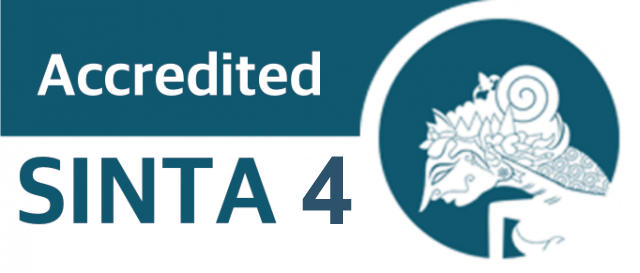IMPLEMENTATION OF BEHAVIORAL AND COGNITIVE THEORIES IN THE ARABIC LANGUAGE LEARNING CURRICULUM: A CONCEPTUAL REVIEW
Abstract
This conceptual overview comprehensively explores the seamless blending of behavioristic and cognitivistic theories within the Arabic language curriculum. It thoroughly explores behaviourism's and cognitivism's theoretical underpinnings, explaining how each has contributed differently to the complex language learning process. The focus behaviourism places on visible behaviour and outside cues are essential to creating vocabulary drills, structured activities, and reinforcement strategies. Conversely, cognitivism emphasizes the learner's mental processes and encourages active participation through assignments requiring problem-solving, comprehension exercises, and critical thinking. By exploring efficacious pedagogical approaches derived from these fundamental beliefs, instructors can enhance students' competency in Arabic. The essay emphasizes how teachers can skillfully combine behavioristic and cognitivistic ideas, drawing on their advantages to create a well-rounded and comprehensive language learning program. This methodology upholds inclusivity and attends to a range of learning styles and personal preferences, thereby enhancing language learning and cultivating a more profound understanding of Arab culture among students inside and outside the Arab world.
Keywords: Arabic learning, behaviorism, cognitivism, language curriculum, integration
Keywords
Full Text:
PDFReferences
Al-Wasy, Baleigh Qassem. “The Effectiveness of Integrating Technology in EFL/ESL Writing: A Meta-Analysis.” Interactive Technology and Smart Education 17, no. 4 (January 2020): 435–54. https://doi.org/10.1108/ITSE-03-2020-0033.
Anderson, John R. Cognitive Psychology an Its Implications. Worth Publishers, 2000.
Bax, Stephen. “Normalisation Revisited: The Effective Use of Technology in Language Education.” International Journal of Computer-Assisted Language Learning and Teaching (IJCALLT) 1, no. 2 (2011): 1–15. https://doi.org/10.4018/ijcallt.2011040101.
Brown, H. Douglas. Principles of Language Learning and Teaching (5th Ed.). Pearson Education, 2007.
Dani, Erzsebet. “How ‘Publish or Perish’ Can Become ‘Publish and Perish’ in the Age of Objective Assessment of Scientific Quality.” Systemics, Cybernetics and Informatics 16, no. 4 (2018): 20–25. https://www.iiisci.org/journal/pdv/sci/pdfs/IP052LL18.pdf.
Dhea Syahzana Sahreebanu, Ahmad Nurcholis, Syaikhu Ihsan Hidayatullah, Muhammad Nur Rois. “Implementasi Kurikulum Merdeka Belajar Kampus Merdeka (MBKM) Di Program Studi Pendidikan Bahasa Arab UIN Sayyid Ali Rahmatullah, Tulungagung.” Al Mi’yar: Jurnal Ilmiah Pembelajaran Bahasa Arab Dan Kebahasaaraban 5, no. 2 (2022): 195–218. https://doi.org/hhttp://dx.doi.org/10.35931/am.v5i2.1346.
Dörnyei, Zoltán, and Ema Ushioda. Teaching and Researching Motivation (2nd Ed.). Pearson Education Limited, 2011.
Et.al., Ulfa Mawaddah Ahmad Opier. “Pelaksanaan Game Scattregories Dalam Pembelajaran Bahasa Arab.” Al Mi’yar: Jurnal Ilmiah Pembelajaran Bahasa Arab Dan Kebahasaaraban 6, no. 1 (2023): 95–116. https://doi.org/DOI: 10.35931/am.v6i1.1564.
Febriani, S. “Implementation of Arabic Learning During Covid-19 Emergency in Indonesia: Hots, Mots, or Lots?” ALSINATUNA 5, no. 2 (2020): 117–29. https://doi.org/https://doi.org/10.28918/alsinatuna.v5i2.2494.
Gibbes, Marina, and Lorna Carson. “Project-Based Language Learning: An Activity Theory Analysis.” Innovation in Language Learning and Teaching 8, no. 2 (May 2013): 171–89. https://doi.org/10.1080/17501229.2013.793689.
Griffiths, A. “Implementing Task-Based Instruction to Facilitate Language Learning: Moving Away from Theory.” TEFLIN Journal 12 (2015): 49–59. https://doi.org/https://doi.org/10.15639/TEFLINJOURNAL.V12I1.
Hamid, M.A. et.al. “Investigating Arabic Foreign Learning In Indonesian Context: It’s Necessety Or The Demand?.” Ijaz Arabi Journal of Arabic Learning 5, no. 2 (2022). https://doi.org/https://doi.org/10.18860/ijazarabi.v5i2.15059.
Hegde, M. N. “Language and Grammar: A Behavioral Analysis.” The Journal of Speech and Language Pathology – Applied Behavior Analysis 5, no. 2 (2010): 90–113. https://doi.org/https://doi.org/10.1037/h0100268.
Hilmi, D. “Impact Of Arabic Online Learning In The Perspective Of How The Brain Learns.” Ijaz Arabi Journal of Arabic Learning. 4, no. 1 (2021): 49–73. https://doi.org/https://doi.org/10.18860/ijazarabi.v4i1.10442.
Hosenfeld, Carol. “A Preliminary Investigation of the Reading Strategies of Successful and Nonsuccessful Second Language Learners.” System 5, no. 2 (1977): 110–23. https://doi.org/https://doi.org/10.1016/0346-251X(77)90087-2.
Husaeni, Dwi Fitria Al, and Asep Bayu Dani Nandiyanto. “Bibliometric Using Vosviewer with Publish or Perish (Using Google Scholar Data): From Step-by-Step Processing for Users to the Practical Examples in the Analysis of Digital Learning Articles in Pre and Post Covid-19 Pandemic.” ASEAN Journal of Science and Engineering 2, no. 1 (2022): 19–46. https://doi.org/10.17509/ajse.v2i1.37368.
Khaled, F., & Anderson, J. “Abdelhadi, R., Hameed, L., Creative Interactions with Art Works: An Engaging Approach to Arabic Language-and-Culture Learning.” Innovation in Language Learning and Teaching 14, no. 1 (2020): 273–89. https://doi.org/https://doi.org/10.1080/17501229.2019.1579219.
Kim, Y., & Choi, M. “Towards Critical Multicultural Teacher Education in the Midst of Ethno-Nationalism: Korean Pre-Service Teachers’ International Learning Experiences.” Teaching and Teacher Education 96, no. 1 (2020). https://doi.org/https://doi.org/10.1016/j.tate.2020.103155.
Linda Ayu Khuroidah, Saptian Diki Saputra. “Implementasi Unsur-Unsur Penyusunan Kurikulum Terhadap Pengembangan Kurikulum Pendidikan Bahasa Arab Daring.” Al Mi’yar: Jurnal Ilmiah Pembelajaran Bahasa Arab Dan Kebahasaaraban 5, no. 1 (2022): 23–52. https://doi.org/DOI: 10.35931/am.v4i2.884.
Mahmoud, Montasser Mohamed AbdelWahab. “Culture and English Language Teaching in the Arab World.” Adult Learning 26, no. 2 (March 2015): 66–72. https://doi.org/10.1177/1045159515573020.
Oxford, Rebecca Louise. Language Learning Strategies: What Every Teacher Should Know. Newbury House Publishers, 1990.
Pallotti, G. “Applying the Interlanguage Approach to Language Teaching.” International Review of Applied Linguistics in Language Teaching 55 (2017): 393–412. https://doi.org/https://doi.org/10.1515/iral-2017-0145.
Richard, Jack Croft, and Theodore Stephen Rodgers. Approaches and Methods in Language Teaching (3rd Ed.). Cambridge University Press, 2014.
Salwa Mohamed. “The Development of an Arabic Curriculum Framework Based on a Compilation of Salient Features from CEFR Level Descriptors.” THE LANGUAGE LEARNING JOURNAL 51, no. 1 (2021): 33–47. https://doi.org/https://doi.org/10.1080/09571736.2021.1923781.
Sharifi, M., Abusaeedi, A., Jafarigohar, M., & Zandi, B. “Retrospect and Prospect of Computer Assisted English Language Learning: A Meta-Analysis of the Empirical Literature.” Computer Assisted Language Learning 31, no. 1 (2018): 413–36. https://doi.org/https://doi.org/10.1080/09588221.2017.1412325.
DOI: http://dx.doi.org/10.35931/am.v6i2.2609
Refbacks
- There are currently no refbacks.
Copyright (c) 2023 Al Mi'yar: Jurnal Ilmiah Pembelajaran Bahasa Arab dan Kebahasaaraban

This work is licensed under a Creative Commons Attribution-ShareAlike 4.0 International License.
Al Mi'yar: Jurnal Ilmiah Pembelajaran Bahasa Arab dan Kebahasaaraban
Index by:
![]()
![]()
![]()
![]()
![]()
![]()
![]()
![]()
![]()
![]()

Publish by:
Program Studi Pendidikan Bahasa ArabSekolah Tinggi Ilmu Al-Qur'an AmuntaiContact us:
Address: Jl. Rakha Pakapuran, Amuntai Utara
Kabupaten : Hulu Sungai Utara
Kode Pos : 71471
Provinsi : Kalimantan Selatan
Email: jurnal.almiyar@gmail.com

Ciptaan disebarluaskan di bawah Lisensi Creative Commons Atribusi-BerbagiSerupa 4.0 Internasional.
___________________________________________________________________________________________________________________________________________________________________
Ciptaan disebarluaskan di bawah Lisensi Creative Commons Atribusi-BerbagiSerupa 4.0 Internasional.

 slot88
slot88








